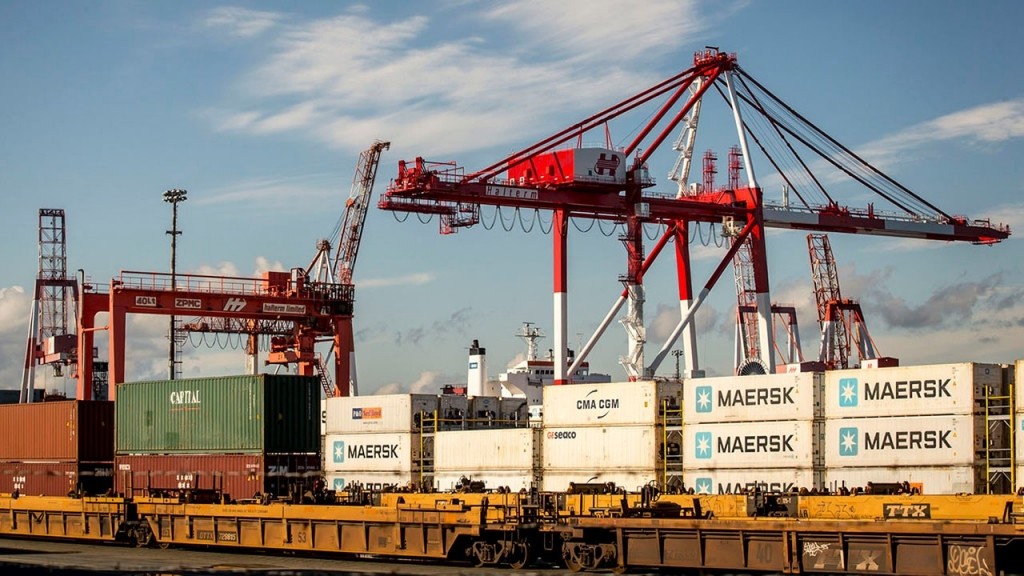Canada well positioned to capture export growth, FCC report says
Canada well positioned to capture export growth, FCC report says
Diversity, technology and innovation in agriculture are key to maintaining Canada’s competitive position in supplying food to the world, according to Farm Credit Canada’s (FCC) latest Canadian Agriculture’s Productivity and Trade report.
“The wide variety of sectors is an underlying strength of Canadian agriculture as far as trade is concerned,” said J.P. Gervais, FCC’s chief agricultural economist. “When markets decline in one sector, demand and output may increase in other sectors. Identifying and taking advantage of different market opportunities can lift the output of multiple sectors and allows Canadian agriculture to maintain our competitive position as a reliable supplier of safe, high-quality food.”
Canada was the world’s fifth largest agriculture exporter in 2015, behind the United States, China, the Netherlands and Brazil, according to the report.
The U.S. was by far the world’s largest single-country agricultural exporter in 2015, with almost 15 per cent of global exports worth US$118.7 billion. The U.S. also continues to be Canada’s single largest agriculture export market, taking in 35.4 per cent of Canada’s total agriculture exports worth US$9.3 billion.
Canada was the world’s largest exporter of wheat, canola, lentils and canary seed in 2015. Canada also ranked among the top 10 exporters of 13 different agriculture commodities. Only France shipped more cattle in 2015, while Canada ranked among the top five exporters in no less than six other commodity categories: oilseeds, cereals, soybeans, barley, edible vegetables and hogs.
The global demand for food, feed and non-food uses of agricultural commodities is growing. However, Canada and the rest of the major exporting countries cannot increase their agricultural output simply by putting more land into production, according to the report.
All major exporters, except Brazil, Mexico, India and China, lost agricultural land as a proportion of their total land base between 1961 and 2013. This means innovation and technology are key to increasing production to meet growing world demand and maintaining Canada’s competitive export positon, according to Gervais.
Through innovation and technological advances, Canadian agriculture produced as much food in 2006 as in 1961 using half the inputs, the report notes, citing Agriculture and Agri-Food Canada data.
“The global landscape of agriculture is evolving. Amidst trade agreements, a slowing global economy and weather disruptions, Canadian producers can remain competitive by focusing on efficiencies,” said Gervais, adding that having a risk management plan to protect against unforeseen circumstances is also a good idea. “Higher productivity and the ability to produce more using fewer inputs holds the most promise for long-term success.”
As one of the world’s largest agriculture and agri-food producing countries, Canada is already well positioned to capture this growth, Gervais concludes.
To join the discussion on FCC’s Canadian Agriculture’s Productivity and Trade report, visit the FCC Ag Economist blog post at www.fcc.ca/AgEconomist.
FCC is Canada’s leading agriculture lender, with a healthy loan portfolio of more than $28 billion. Our employees are dedicated to the future of Canadian agriculture and its role in feeding an ever-growing world. We provide flexible, competitively priced financing, management software, information and knowledge specifically designed for the agriculture and agri-food industry. Our profits are reinvested back into agriculture and the communities where our customers and employees live and work. Visit fcc.ca or follow us on Facebook, LinkedIn, and on Twitter @FCCagriculture.
– 30 –
For more information, photos, graphs or interviews, contact:
Trevor Sutter
Corporate Communication
Farm Credit Canada
1-855-780-5313
trevor.sutter@fcc.ca
![]()















